Category: Uncategorized
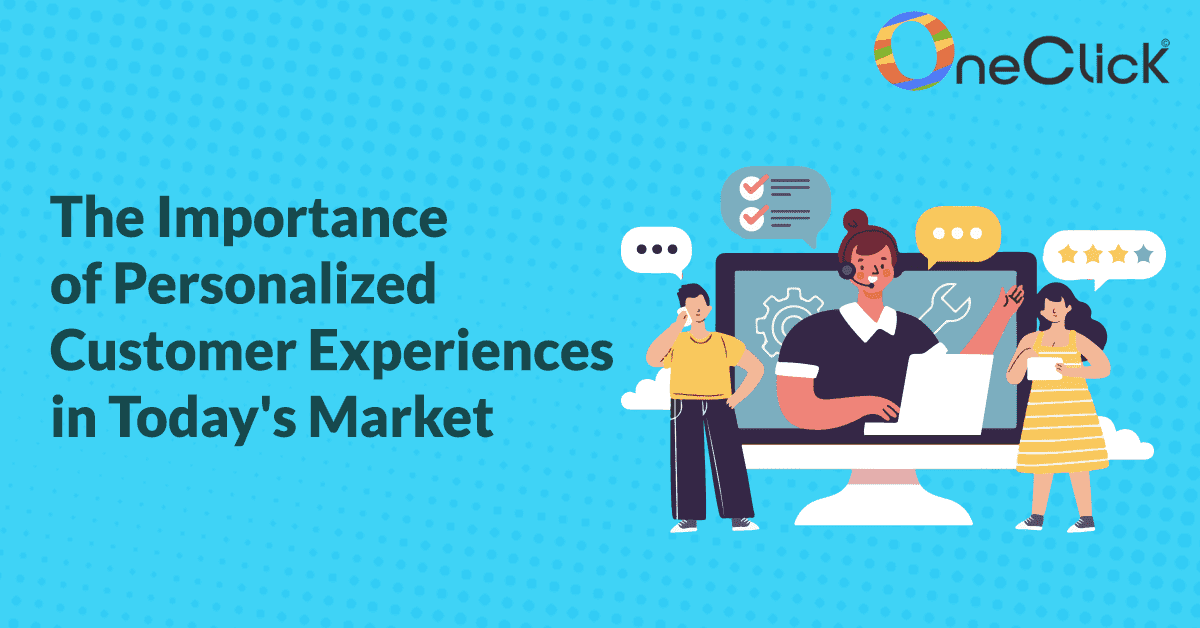
The Importance of Personalized Customer Experiences in Today's Market
In the ever-evolving landscape of business, where competition is fierce and customer expectations are soaring to new heights, the need for personalized customer experiences has become more crucial than ever. Today’s market demands a departure from generic approaches towards tailored strategies that captivate and engage customers on an individual level. As CEOs, CXOs, and CTOs, you hold the reins of your organization’s success, and understanding the significance of personalized customer experiences is the key to unlocking unprecedented growth and unwavering customer loyalty.
Harnessing the Art of Personalization: A Game-Changer for Your Business
In a world inundated with choices, customers are seeking brands that genuinely understand and address their unique needs. According to a survey conducted by Epsilon, 80% of consumers are more likely to do business with a company that offers personalized experiences. Additionally, Salesforce’s State of the Connected Customer report revealed that 52% of consumers are likely to switch brands if a company doesn’t personalize communications. Hence, Personalization is the secret ingredient that empowers businesses to forge authentic connections and stand out in a sea of mediocrity. By leveraging advanced data analytics and technologies such as artificial intelligence and machine learning, you can unravel profound insights into your customers’ preferences, behavior patterns, and desires. Armed with this knowledge, you can curate personalized experiences that resonate deeply, leaving an indelible mark on their hearts and minds.
The ROI of Personalized Customer Experiences: Beyond the Surface
At first glance, implementing personalized customer experiences may appear as an additional investment. However, astute leaders recognize that the returns extend far beyond immediate gratification. By delivering tailored experiences, you establish a sense of brand loyalty that transcends transactional relationships. Satisfied customers turn into brand advocates, amplifying your reach and influence. Furthermore, personalization fosters higher customer lifetime value, repeat purchases, and increased customer retention rates, ultimately fueling sustainable business growth.
Embracing Hyper-Personalization: Unveiling the Future of CX
As technology continues to push boundaries, hyper-personalization emerges as the frontier of customer experience (CX) innovation. Going beyond basic personalization, hyper-personalization leverages real-time data, predictive analytics, and contextual understanding to create highly tailored experiences in the moment. Through personalized recommendations, anticipatory customer service, and intuitive interfaces, hyper-personalization empowers organizations to exceed customer expectations and solidify their position as industry leaders. Embrace this forward-thinking approach to stay ahead of the curve and delight your customers at every touchpoint.
Personalized Experiences as a Competitive Differentiator
In today’s hyper-competitive market, differentiation is paramount. The ability to offer personalized experiences sets your organization apart from the crowd, giving you a competitive edge that cannot be replicated easily. By understanding your customers on an intimate level, you can develop unique value propositions, craft personalized marketing campaigns, and deliver tailored product offerings that cater specifically to their desires.According to a survey conducted by Deloitte, 36% of customers expressed interest in purchasing personalized products or services, highlighting the demand for tailored experiences. Moreover, a study by Gartner revealed that by 2023, 15% of all customer service interactions will be completely handled by artificial intelligence, demonstrating the growing importance of personalized and efficient customer experiences.
The Ethics of Personalization: Striking the Balance
While personalization yields numerous benefits, it is crucial to strike a delicate balance between customization and customer privacy. Respecting data privacy regulations, being transparent with customers about data usage, and offering robust security measures are paramount. By assuring customers of their data’s safety and ensuring they retain control over their personal information, you build trust and foster long-term loyalty. Demonstrating ethical practices while delivering personalized experiences strengthens your brand’s reputation and solidifies your position as a trustworthy industry leader.
In a world where customer expectations are ever-evolving, personalized experiences have emerged as the linchpin for success. As CEOs, CXOs, and CTOs, your understanding of the power of personalization can make or break your organization’s future. By harnessing advanced technologies, embracing hyper-personalization, and differentiating your brand, you can forge unbreakable connections with your customers, leading to unparalleled growth, heightened customer loyalty, and uncharted success. One company at the forefront of providing tailored customer experiences in our industry is OneClick. Our innovative approach, leveraging artificial intelligence and machine learning, empowers businesses to deliver seamless and customized interactions, transforming mere transactions into lasting relationships.By investing in tailored customer experiences, you position your organization as a forward-thinking industry player, poised to captivate your customers and drive unparalleled growth.
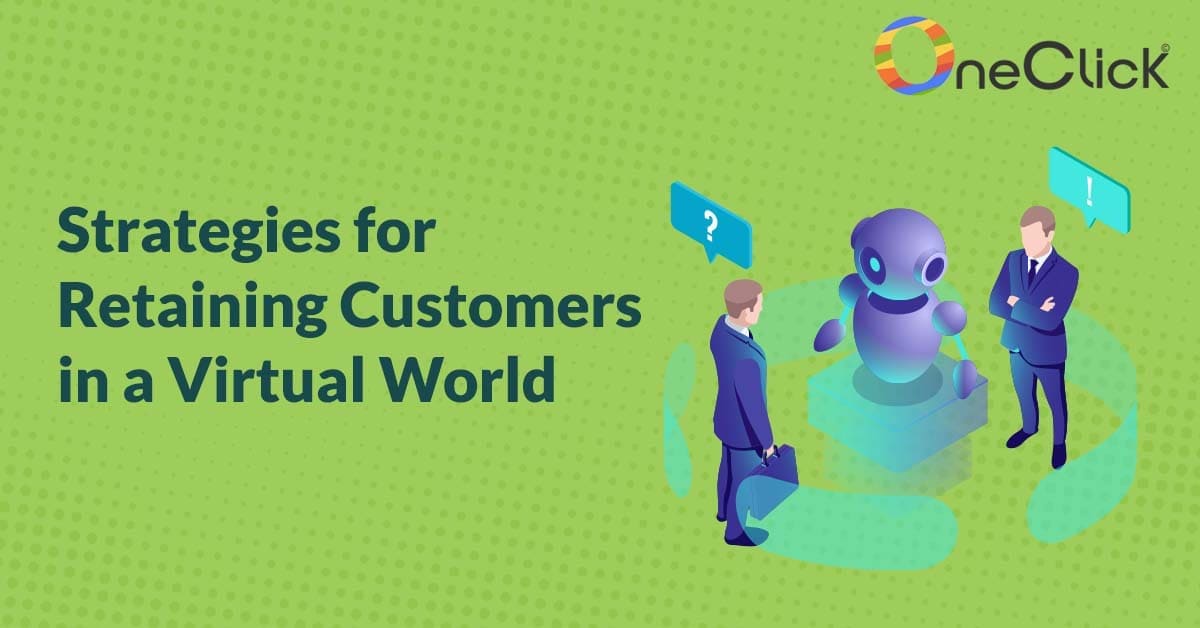
Strategies for Retaining Customers in a Virtual World
In today’s technologically advanced epoch, where virtual interactions reign supreme, businesses must adapt and innovate to retain their most valuable asset: customers. CEOs, CXOs, and CTOs, you are the architects of your organizations, entrusted with the responsibility of nurturing customer loyalty amidst this digital metamorphosis. This blog aims to unravel cutting-edge strategies that transcend the mundane and empower you to conquer the challenges of retaining customers in this virtual world. So, prepare to embark on a transformative journey, where the digital landscape meets unparalleled customer engagement!
Mastering the Art of Personalization:
As leaders in the digital domain, you understand that personalization is the holy grail of customer retention. By integrating advanced analytics and AI-driven insights, you can craft bespoke experiences that resonate with your customers on a profound level. Leverage customer data to unearth valuable insights, enabling you to tailor your products, services, and marketing campaigns with surgical precision. Embrace the power of hyper-personalization, curating experiences that cater to individual preferences, needs, and aspirations. This subtle fusion of data-driven finesse and human touch will forge unbreakable bonds between your brand and its patrons.
Augmenting User Experience through Virtual Interactivity:
In a virtual world, where physical interactions are supplanted by digital touchpoints, the user experience becomes paramount. As custodians of success, you must invest in cutting-edge technologies like augmented reality (AR) and virtual reality (VR) to augment the customer journey. By enabling customers to visualize and engage with your products virtually, you create immersive experiences that leave an indelible imprint on their minds. Whether it’s offering virtual product demonstrations, interactive virtual showrooms, or immersive virtual events, harness the potential of these technologies to transcend the limitations of distance and forge lasting connections.
Cultivating Community Engagement:
In this age of virtual interconnectedness, building a community around your brand is essential for customer retention. Tap into the power of social media and online platforms to foster meaningful dialogues, facilitate peer-to-peer interactions, and encourage user-generated content. Establishing brand advocacy groups, organizing virtual knowledge-sharing sessions, and hosting exclusive digital events for loyal customers are compelling strategies to enhance engagement. By nurturing a vibrant community, you create a sense of belonging that compels customers to stay loyal to your brand.
Leveraging Gamification Techniques:
Human beings are instinctively driven by competition, achievement, and rewards. Capitalize on these inherent motivations by incorporating gamification techniques into your virtual customer retention arsenal. By creating gamified experiences, such as loyalty programs, badges, and leaderboards, you ignite a spark of enthusiasm that keeps customers engaged and incentivized to continue their journey with your brand. Harness the power of friendly competition, unlock hidden achievements, and offer tangible rewards to transform your virtual ecosystem into an irresistible playground.
Harnessing the Power of Omnichannel Integration:
In a virtual world brimming with possibilities, a seamless omnichannel experience is the cornerstone of customer retention. Integrate your online platforms, websites, mobile apps, and social media channels to create a cohesive ecosystem that transcends the boundaries of individual touchpoints. Embrace the power of real-time communication, where customers can effortlessly transition between channels without losing context. Utilize chatbots, AI-powered assistants, and personalized notifications to create an immersive omnichannel environment that anticipates customer needs and ensures a seamless experience at every turn.
As esteemed leaders, you hold the keys to unlocking customer retention in this virtual world. By embracing personalization, enhancing user experiences, cultivating community engagement, leveraging gamification, and harnessing omnichannel integration, you will forge an unbreakable bond between your brand and its patrons. In this pursuit, OneClick stands tall as a beacon of excellence, offering innovative customer solutions that revolutionize the retention landscape.
By partnering with us, you gain access to our unparalleled suite of tools and strategies, enabling you to craft bespoke experiences, deliver personalized interactions, and foster a sense of community around your brand. Through our innovative solutions, we have consistently demonstrated their prowess in transforming customer engagement and loyalty into tangible results.
Remember, in this digital epoch, the true essence of customer retention lies in creating a symphony of human connection, technological prowess, and unrivaled innovation. Together, let us transcend the ordinary, seize the extraordinary, and sculpt a future where customer loyalty thrives in this virtual panorama. Onward, pioneers, toward unparalleled success!
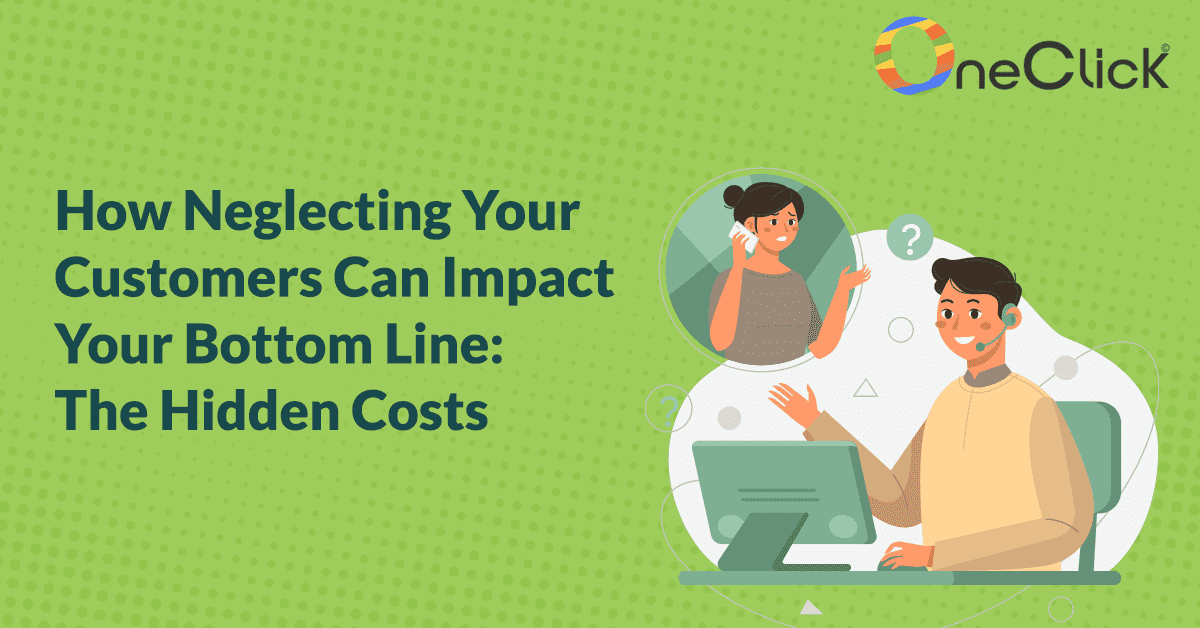
How Neglecting Your Customers Can Impact Your Bottom Line: The Hidden Costs
In today’s hypercompetitive business landscape, where customer expectations are reaching unprecedented heights, neglecting your customers can be a costly mistake. While many organizations focus their energies on cutting-edge technologies, disruptive innovations, and market expansion, they often overlook the indispensable pillar of success—customer satisfaction. This blog post aims to illuminate the far-reaching consequences of customer neglect, transcending the superficial understanding of its impact. As esteemed CXOs, it is imperative to delve into the depths of this topic to avoid detrimental repercussions for your organization’s bottom line.
The Erosion of Customer Loyalty:
Customer loyalty is the bedrock upon which successful businesses thrive. However, neglecting customers erodes their loyalty, leading to a decrease in customer retention rates. The true cost lies not only in losing individual customers but in the compounding effect of their negative word-of-mouth referrals. According to a study by Bain & Company, increasing customer retention rates by just 5% can lead to a 25% to 95% increase in profits. Conversely, a 10% decrease in customer retention can result in a 30% decline in profits. Neglecting customers erodes loyalty, leading to higher customer churn rates and missed revenue opportunities.In the digital age, dissatisfied customers possess a powerful megaphone, capable of amplifying their grievances to a vast audience. Ignoring customers’ needs foster a sense of apathy, inevitably pushing them towards competitors who prioritize their satisfaction.
Diminished Lifetime Value:
Neglecting customers can have severe ramifications for their lifetime value (LTV). By disregarding the importance of personalized experiences, timely support, and proactive engagement, organizations risk alienating customers prematurely. LTV quantifies the total revenue a customer generates throughout their relationship with a company, making it a critical metric for sustainable growth. When customers feel undervalued or neglected, they are more likely to seek alternatives, depriving businesses of the potential revenue streams they would have brought over the long term.
Escalating Customer Churn:
Customer churn, often referred to as the “silent killer,” is a major concern for any business. Neglecting customers exponentially increases the likelihood of churn. According to a study by Forrester Research, companies with higher customer satisfaction rates experience an average churn rate of 13%, while those with lower satisfaction rates face a churn rate of 33%. Neglecting customers contributes to higher churn rates, resulting in a constant drain on resources and revenue. Besides, the cost of acquiring new customers is substantially higher than retaining existing ones, making churn a detrimental blow to profitability. By ignoring customer needs and failing to foster meaningful relationships, organizations inadvertently contribute to the vicious cycle of customer churn, leading to a continuous drain on resources and revenue.
Damaged Reputation and Trust:
In today’s interconnected world, news travels at the speed of light, and negative experiences can go viral within seconds. Neglecting customers not only jeopardizes individual relationships but also tarnishes an organization’s reputation and erodes the trust it has painstakingly built over time. In an era where customers heavily rely on online reviews and peer recommendations, even a single dissatisfied customer can significantly impact public perception. This erosion of trust can be catastrophic, deterring potential customers from engaging with the brand and tarnishing its image in the eyes of industry peers.
Missed Opportunities for Innovation:
By turning a blind eye to customer feedback, organizations deprive themselves of invaluable insights for innovation and growth. Customers, being at the forefront of market trends, possess unique perspectives that can unlock opportunities for business optimization, product refinement, and disruptive innovations. Neglecting these valuable insights stifles creativity and limits an organization’s ability to remain competitive. Embracing customer-centricity not only fosters stronger relationships but also serves as a wellspring of innovation, propelling businesses to new heights.
In this ever-evolving business landscape, where customer expectations continue to soar, neglecting customers can have far-reaching consequences that extend beyond immediate financial losses. By embracing a customer-centric mindset and actively investing in customer experience, you not only safeguard your organization’s bottom line but also create a foundation for sustainable growth and success. In partnership with OneClick, businesses have the opportunity to enhance customer experience, drive loyalty, and improve their bottom line. Backed by data-driven insights and innovative solutions, we empower organizations to bridge the gap between customer expectations and business offerings, ensuring that no customer is neglected or overlooked. Together, let us shape a future where customer neglect becomes a relic of the past and customer satisfaction becomes the cornerstone of success, as supported by compelling data and real-world examples.
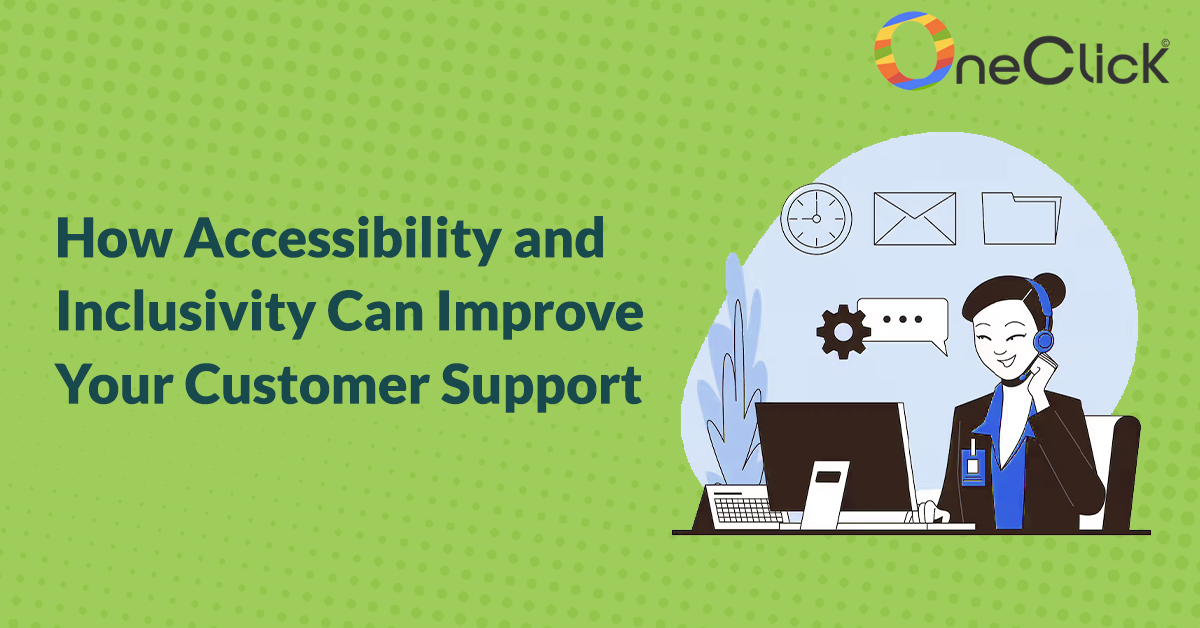
How Accessibility and Inclusivity Can Improve Your Customer Support
In today’s fast-paced and interconnected world, businesses are constantly seeking ways to stand out from the competition and create meaningful connections with their customers. As CXOs, you understand the critical role customer support plays in driving customer satisfaction and loyalty. But have you considered the profound impact that accessibility and inclusivity can have on your customer support strategy? In this thought-provoking blog post, we will delve into the untapped potential of accessibility and inclusivity, revealing how they can revolutionize your customer support efforts and propel your business to new heights.
Embracing Accessibility: A Game-Changer for Customer Support:
Imagine a customer trying to reach your support team through multiple channels: phone, email, chat, or social media. To truly embrace accessibility, it is essential to ensure that each channel is readily available, easy to use, and optimized for a diverse range of customers. This could involve providing multiple language options, accommodating various communication preferences, or even offering 24/7 availability to cater to different time zones and schedules.
Moreover, accessibility extends to the information and resources provided to customers. Are your knowledge base articles and FAQs accessible and easy to navigate? Do you provide alternative formats such as audio or video content to cater to different learning styles? By making your self-help resources inclusive and easily accessible, you empower customers to find answers independently, saving time and effort for both parties.
Inclusivity: Forging Authentic Connections:
Creating an inclusive customer support experience involves going beyond surface-level gestures and embracing a wide range of customer preferences and needs. By providing multiple output options such as video, audio, and multilingual support, you can establish genuine connections with customers across various geographies. Language plays a crucial role in inclusivity as well. To cater to customers across different geographies, consider providing multilingual support options. This may involve having a team of multilingual support agents who can provide assistance in various languages or implementing machine translation tools to enable real-time language support. By breaking down language barriers, you demonstrate your commitment to reaching and serving customers on a global scale.
By integrating these multiple output options and language support into your customer support strategy, you ensure that individuals with diverse preferences and backgrounds can engage with your brand in a manner that aligns with their unique needs. This level of inclusivity not only enhances customer satisfaction but also fosters a sense of belonging and strengthens the authenticity of your connections with customers.
Empowering Customer Support with AI and Automation:
Artificial intelligence (AI) and automation technologies have revolutionized the customer support landscape, offering efficient and scalable solutions. However, when leveraging these technologies, it is essential to do so in a way that upholds the principles of accessibility and inclusivity. AI-powered chatbots, for example, can be instrumental in providing immediate support and assistance to customers. However, it is crucial to ensure that these chatbots are designed with accessibility in mind, incorporating features such as screen reader compatibility and providing alternative communication channels for customers who may have difficulty interacting with text-based interfaces.
Automation can also play a significant role in streamlining support processes. By automating routine tasks and workflows, you free up your support agents’ time to focus on more complex and personalized customer interactions. However, it is vital to strike a balance, as overly relying on automation can lead to a lack of human touch and empathy. Strive to find the right equilibrium between automation and human intervention, ensuring that your customers always have access to genuine, human-driven support when needed.
Incorporating accessibility and inclusivity into your customer support strategy is not only the right thing to do ethically, but it also has tangible benefits for your business. This fosters authentic connections, enhances customer satisfaction, and expands your reach on a global scale. At OneClick, we have mastered the art of implementing accessibility and inclusivity across customer touch points through our AI-powered technology. With a track record of successful implementations for our esteemed clientele, we understand the transformative power of creating an inclusive and accessible customer support experience. Our innovative solutions enable businesses to deliver personalized, empathetic, and multichannel support that caters to the unique needs and preferences of their customers.
Moreover, by empowering your support team with AI and automation technologies, you can optimize efficiency and scalability while maintaining the human touch that is vital for building meaningful customer relationships. Together, let’s revolutionize your customer support strategy and propel your business towards unparalleled success.

Advanced Chatbots: The Future of AI in Customer Service
Welcome to the future, where the synergy of artificial intelligence (AI) and customer service is redefining the way businesses interact with their customers. In this age of rapid digital transformation, CXOs are seeking innovative solutions to enhance customer experience and boost operational efficiency. Enter advanced chatbots – the vanguard of AI-driven customer service. In this blog post, we will delve into the dynamic landscape of advanced chatbots, exploring their potential to revolutionize customer interactions and elevate business success.
The Rise of Advanced Chatbots: Pioneering the New Era
In an increasingly connected world, customers demand seamless, personalized experiences. Traditional chatbots have paved the way for more sophisticated conversational agents capable of understanding context, tone, and intent. Advanced chatbots leverage cutting-edge natural language processing (NLP) techniques, machine learning algorithms, and deep neural networks to comprehend and respond to customer queries in a human-like manner. This transformative technology equips businesses with a powerful tool to deliver exceptional customer service while optimizing resource allocation.
Harnessing the Power of Natural Language Processing (NLP)
At the heart of advanced chatbots lies NLP, a subset of AI that enables machines to understand and interpret human language. By employing sentiment analysis, entity recognition, and intent classification, advanced chatbots can decipher customer messages accurately, uncovering the underlying meaning behind their words. Armed with this contextual awareness, chatbots can provide relevant, timely responses, ensuring a seamless customer journey and fostering deeper engagement.
Personalization and Contextualization: The Key to Exceptional Customer Experiences
Gone are the days of one-size-fits-all interactions. Advanced chatbots empower businesses to offer tailored experiences by leveraging customer data and historical interactions. By recognizing individual preferences, purchase history, and previous conversations, chatbots can personalize recommendations, troubleshoot issues, and anticipate customer needs. The ability to seamlessly integrate with CRM systems further augments this personalized approach, enabling chatbots to access relevant customer information in real-time, providing a holistic view of each customer and ensuring hyper-personalized engagements.
Chatbots as 24/7 Customer Support Champions
Customer support is no longer bound by office hours. In today’s globalized marketplace, businesses must be available round the clock to cater to customers across different time zones. Advanced chatbots fill this void, acting as tireless customer support champions. They can handle a multitude of inquiries simultaneously, providing instant responses and resolutions without any delays or human intervention. This not only enhances customer satisfaction but also reduces response times and allows human agents to focus on more complex and value-added tasks.
Enhanced Customer Insights: Mining Conversations for Actionable Data
The interactions between customers and chatbots yield a treasure trove of valuable data. Advanced chatbots possess the ability to extract and analyze this data, generating actionable insights for businesses. By tracking sentiment trends, frequently asked questions, and customer preferences, chatbots offer valuable feedback to inform strategic decision-making. This data-driven approach not only enhances customer satisfaction but also enables businesses to optimize their products, services, and marketing strategies.
Augmenting Human Expertise: The Era of Hybrid Customer Service
Contrary to popular belief, advanced chatbots are not designed to replace human agents but to augment their capabilities. By automating routine inquiries and tasks, chatbots free up human agents to focus on more complex and high-value interactions. This symbiotic relationship between humans and chatbots creates a hybrid customer service model that combines the efficiency of AI-driven automation with the empathy and intuition of human agents, resulting in superior customer experiences.
The integration of advanced chatbots into customer service operations represents a significant leap forward in AI-driven customer interactions. By harnessing the power of advanced chatbots like OneBot, developed by OneClick, businesses can truly overhaul their client’s customer experience. Its ability to integrate with CRM systems and leverage customer data enables it to provide hyper-personalized engagements and anticipate customer needs.The future is here, and with OneBot, you have the opportunity to overhaul your client’s customer experience and elevate your brand to new heights. Embrace the power of advanced chatbots and embark on a transformative journey towards superior customer service.

Want to convert your disputing customers into brand advocates? Follow these 5 digital CX hacks
Introduction
“Your customers want an experience that is fast and convenient” – (Krisztian Tabori, head of global brand design and co-founder of Dixa)
In today’s hyper-competitive world, marketers around the globe have adopted numerous visualization and intelligent analysis techniques to boost their customer experience on their platforms. With correct and optimal segregation of customer needs, an organization can streamline their data flow, design construction, and marketing channels for improved customer engagement.
“While only 8% of customers today feel they receive a stellar customer experience, 80% of CEOs today feel their customers have exquisite interactions with their brand.”
Despite the abundant availability of marketing tools, companies still lack the answers to a fundamental understanding of the niche of their product or service and how they can resolve a problem in customer’s life by availing their product to them.
Due to unrealistic expectations from customers, organizations fail to distinguish themselves from their competitors, availing the same product or service. To stand out from the competition, a brand has to understand customer sentiment and resolve present issues that customers face in selecting a cost-effective response during their customer journey.

Fig.1: Brand Presence Timeline
Understanding Customer Disputes
Customers are users of products or services, and they face many problems navigating the complex content structure availed by an organization. While performing an action in the customer journey on a digital platform, it is viable to provide easy-to-use functions for a seamless customer experience.
“83% of shoppers would exchange data for a more personalized experience.” – (Source: Accenture)
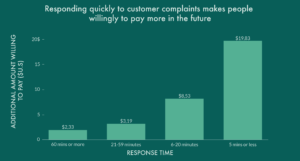
Fig. 2: Additional Capital Expenditure vs Response Time – (Source: superoffice)
When a dispute is raised by a customer, problems are pointed out that are user-centric. Treating a customer individually and resolving their issues, boosts customer retention and enhances brand loyalty. By providing online dispute forms, companies allow users to conveniently change something that they don’t prefer.
For example, a dispute related to product purchase or data inaccuracy raises a question about the framework of the platform. To resolve such an issue, events occurring in customers’ journey help to identify key malfunctioning aspects such as evaluation of generated order details and faulty information relay. It helps to check with the concerned department responsible for it and resolve the issue quickly.
How brand advocacy transforms brands?
“Over 90% of consumers trust Word-of-Mouth (WOM) marketing recommendations over any other type of marketing.” – (Source: Neilsen)
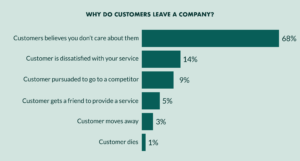
Fig. 3: Reasons of Customer Abandonment – (Source: superoffice)
Converting disputing customers into brand advocates is a two-edged sword and should be handled with caution. Despite the result of a query resolution, customer satisfaction plays a vital role in shaping customer opinion. So, in other words, if a customer is dissatisfied even with a correct solution, they might not stay with the brand and switch to one of the competitors.
One of the main goals of query resolution should be brand advocacy by customers. Through it, brands can improve results at individual stages of the customer journey, including:
- Brand awareness
- Website Traffic
- Product sales
- Social media influence
- Inbound inquiries
- Lead generation
“With brand advocacy, about 650% ROI for every dollar spent is recorded for an average brand” – (Source: Tomoson)
Advocacy marketing helps to promote your brand via social media, customer reviews, and word-of-mouth marketing. Brand advocates are invaluable brand assets as they are lazy but well-versed in preferred brands and products. Contribution by customers generates a natural dialogue circulating the brand, advocating product information for quality leads and potential customers.
Brands should invest in field research for their products or services to identify the best customer advocates in an easier and more systematic order. With Net Promoter Score (NPS) surveys, brands can get an answer to a simple question: How much do you like the product to advocate for it or recommend it to someone? Through appropriate customer response, the following score sheet evaluates the advocacy level of the customer:
- 0-6: Customers who are unsatisfied and likely to spread negative advertisements.
- 7-8: Customers who are passive, neither promoting nor harming the brand reputation.
- 9-10: Customers who are satisfied and actively promote the product in use by WOM.
To structure a successful advocate marketing strategy, remember to:
- Create a working and efficient product for seamless experience
Despite hefty marketing strategies, if your product is non-functional or has issues that disrupt customer experience, then consumers won’t advocate your product or service. From purchase to delivery, a brand should initiate customer interaction by contributing to every stage of the customer journey for an unforgettable experience.
- Prioritize Customer Needs
Building a culture that prioritizes customers should be the aim of an organization for effective brand reciprocity and brand loyalty. Taking constant feedback from the consumers or responding to consumers creates a natural sense of dialogue with the company. Add informational content such as FAQs, product details, company policies, and more to keep them updated about your services.
- Ease Customer Advocacy and Be Persistent
“92% of global consuers trust user-generated content more than advertising.” (Source: slideshare)
Allow consumers to share purchase experience or service information to social platforms like Facebook, Twitter, and Instagram or conversational platforms like WhatsApp, WeChat or Line. Turning customers into brand advocates is simple but requires continuous efforts by the brand to stay on top of problem points in the customer journey.
- Spread Awareness through Advocates
“48% of customers who had negative experiences with a company told 10 or more people.” (Source: Harvard Business Review)
Create campaigns to identify user-generated content (UGC) to record customer engagement metrics. Keep a check on your campaign engagement via Net Promoter Score (NPS) survey to analyse the loyalty of your customers.
What is Digital Customer Experience?
Digital CX is the count of total online interactions of customers with a brand. There are various ways to interact with a customer, such as a website, mobile app, social media, email, and live chat. They play a crucial role in gathering customer queries or essential feedback offered by willing customers.
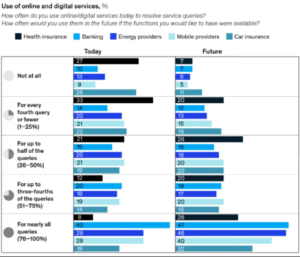
Fig. 4: Consumer Interest in Digital Engagement
Digital CX Hacks for 2023
- Optimize customer experience via Omni-channel
While searching for a product or service to purchase, customers engage in multiple ways before selecting a preferred channel for brand interaction. These platforms are built to deliver similar information but the interface is different for each.
“Over 90% of the global population use a mobile device to go online” – (Source: Statista)
Creating an omnichannel CX ensures seamless information flow between different channels. Hence, allowing customers to navigate the brand content without interruptions.
- Embed Artificial Intelligence
With constant improvements in AI technology, companies can automate their workflow with personalized programmable inputs to boost customer engagement, minimise operational costs and human intervention, and increase robust problem-solving. It is the most useful tool to address and fulfil customer sentiment.
- Chatbots and Self-service Knowledge base
“75% of inquiries will be resolved by chatbots in 2022” – (Source: Juniper Research)
The integration of chatbot technology has allowed businesses to answer pre-determined customer actions without human intervention. It saves capital for a company which pays for customer service agents for basic problem resolution or lead generation.
A self-service Knowledge Base is a shortcut to problem assessment, earlier supplemented by peers or a call centre agent. Including relevant content, such as FAQs, helps the customer service team to streamline work and assess important queries that are more problematic for consumers. Automation of self-operating processes saves time and resources.
- Adopt Analytics
Collecting information related to customer interaction with the website, mobile application, social media, and digital advertisement allows businesses to evaluate product success among a set of targeted audiences.
With online tools such as Google Analytics and SEM Rush, an organization can monitor customer journeys and identify friction points. It helps in refining digital CX strategy for quality customer experience.
- Highlight Data Security and Privacy
By collecting user data, companies function better as it supports analytic tools and marketing strategies to project future marketing campaigns. But to misuse customer data by sharing with unknown third-party sources reduces brand authority and credibility.
With day-to-day online data breaches, internet users are constantly cautious about sharing details with any website. It harms a brand as customer feedback is the backbone of future improvements.
Make sure your brand is up to date with the latest privacy laws and regulations for effective and uninterrupted engagement with your customers.
Conclusion:
Throughout the customer journey, brands create and destroy advocates according to the current trend that defines the market. Brands should invest in continual advocacy of their products or services through influencers who are relevant and popular to the targeted audiences through effective brand advocacy strategy, identifying brand advocates, and incentivizing user-generated content to enhance brand loyalty.

KMS for Call Centers: Why is it important, and how can you implement it?
Introduction:
A knowledge Management System (KMS) is a tool that allows the creation, management, storage and retrieval of information from a knowledge base and allows access of knowledge resources to contact center agents and employees for sharing solutions with customers
It involves storing FAQs and other company or product-related information in an easy-to-understand content structure, including step-by-step written articles, videos, or images.
With an adequate knowledge database, improved customer service helps to lay a firm foundation for a successful business. Connecting these services with contextual and actionable information allows quality customer service.
What is KMS for Call Center?
Providing a seamless user experience through the correct information is a difficult task to perform. For call-centre agents, improving the quality of customer service deliverance at times pushes for an intelligent call-centre knowledge management system. . Agents spend considerable time answering complex queries and sometimes fail to provide accurate information to the customers on their own. KMS is a tool that allows agents to efficiently resolve customer issues, thereby, improving C-SAT and NPS scores.
With simplified and compelling information relays, an organization can build strong customer loyalty, improve customer retention, and increase lead generation.
Why KMS for call centres is important?
“89% of businesses are expected to compete mainly on customer experience.” (Source: Gartner)
Customer Experience is an important differentiator in the spectrum of availing products and services. Elevate customer experience via a seamless path that enables access to customer data to deliver a personalized solution.
“74% of people are likely to switch brands if they find the process difficult.”
With a streamlined customer query resolution structure, customers engage better and stay with a brand longer than with brands with inadequate solutions. There are several metrics that are covered by an intelligent knowledge management system, and they are:
- Average Handle Time (AHT):
Investing in a knowledge management system allows agents to handle customer calls with better and more precise information on the conflict areas to answer customer queries. KMS increases the quality of query resolution and decreases the average handle time for the agent.
- First Call Resolution
The first call by a customer is regarded as the golden ticket to improving generation customer experience and is one of the difficult aspects of increasing customer service. Handling impatient and demanding customers via KMS helps the support teams to deliver precise information for their queries.
- Error by Agents
With the help of knowledge management tools, agents are less likely to make an error while interacting with customers. Hence, saving a significant amount of time and capital and improving the customer experience.
How to implement Knowledge Management System for Call Centers?
Begin by deciding a knowledge management strategy – the best format to relay the correct information to the agents and customers.
- Collect Information to Document
Conceptualize and categorize the information you want to record in the knowledge management system. Be it product information, step-to-step guides, how-to tutorials, or FAQs, add and build a substantial database to streamline in later stages.
- Information Layout
Analyze customer data and identify key points to trigger a solution for them. With every query resolution, there are several related queries for a particular topic. To efficiently guide support agents to a better solution, a well-structured layout is required.
- Track and Analyze
With the integration of analytics software, an organization can monitor what works and what does not work. To increase CSAT, customer feedback plays a vital role in shaping customer engagement for future services.
- Keep KMS updated
Static and obsolete knowledge can lead to customer dissatisfaction and increases confusion with current knowledge parameters. To avoid customer disengagement with services, organizations need to constantly update their knowledge to concur with current standards of customer queries.
Conclusion:
A knowledge management system for a call centre boosts agent productivity with streamlined data, allowing them to troubleshoot customer problems with appropriate and accurate solutions. It also reduces operational costs substantially and aids current employees with better skills, helping them to function better.
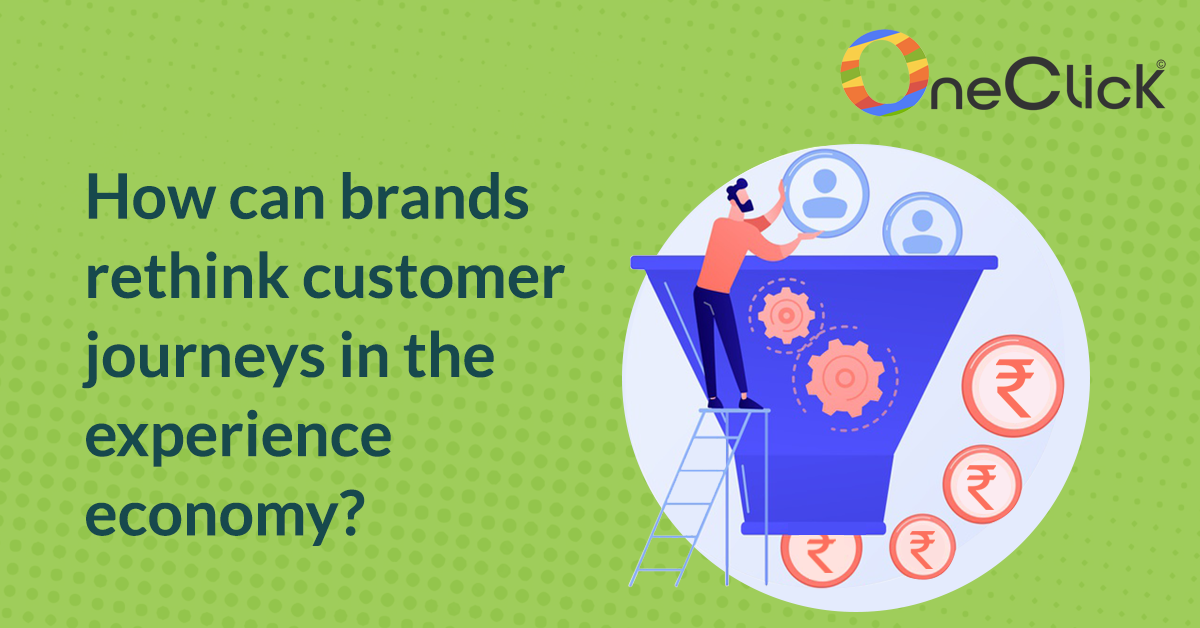
Topic: How can brands rethink customer journeys in the experience economy?
“Evolved companies aren’t customer-centric. They’re customer experience-centric.” – (Source: Prophet)
Since the end of the pandemic in 2022, companies were relieved to see customers returning for their services. Due to the complete digitalization of the consumer journey in the past two-years millennials are craving experience-centric purchases. It’s not just the purchase of the product that satisfies them, it is the experience that comes with it. To re-evaluate the customer journey, it is vital to understand the customer journey before purchasing a product or service.
“81% of retailers increased their investment in CX over 2020-2022.” – (Source: Talkdesk)
Identifying Customer Journey
To reach the title of an ‘Experienced Brand’, an organization must focus on creating continual value with customers across the entire customer journey. By highlighting customer experience as the focus of marketing strategy, businesses can connect with consumer behaviour as well as create unique workflows.
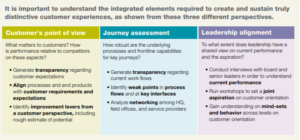
Fig.1: Customer Journey Touch-Points
- Understanding Actual Customer Journeys
Not all customers undertake the same journey in purchasing a product, experiencing a service, or performing a transaction. Their paths vary, based on personal preferences, available channels, and the way processes are organized. Not all customers undertake the same journey in purchasing a product, experiencing a service, or performing a transaction. Their paths vary, based on personal preferences, available channels, and the way processes are organized.
For the orthodox customer journey, following are all the touch points for a traditional customer:
- Prioritizing Investments
Tying customer journeys to satisfaction scores allows companies to understand precisely which journeys mean the most to the bottom line and align the possible investments in technology, people, and incentives with expected returns. It also allows companies to understand all the other business factors that a journey affects and the total value at stake.
Revenues associated with the journey are also affected, for example, from cross-selling when a customer is taken on board. Finally, there may be other business impact, such as the ability to detect and prevent fraud. One outcome of the diagnostic is a business case at a journey level, which helps set priorities for capturing value from improving the customer experience.
- Identifying Frustrations and Happiness
A data-based diagnostic can be much more precise in identifying the events affecting customer frustration or happiness. In particular, it allows a company to link customer satisfaction to specific operational elements such as the time it takes to complete the journey, the number of steps that each channel requires, or the way the customer interacts with agents. From there it is possible to understand precisely the break points in the customer experience. It also makes it easier to track and set target goals for these journeys
Brands reliant on successful ways of past marketing strategies are not going to get the same results. Nowadays, delivering exceptional customer experiences, consistently is one of the main features sought out by leading brands. An innovative experience tailored to satisfy throughout the customer journey initiates better revenue, enhanced brand loyalty, and increased customer retention.
Challenges Faced in Implementing a Seamless Customer Experience
“75% of businesses believe that they are customer-centric, yet only 30% of customers agree, creating an experience gap.” – (Source: Capgemini)
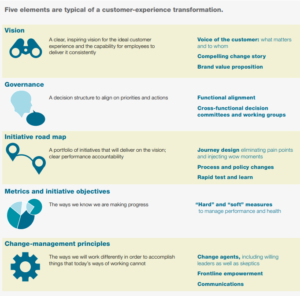
Fig.2: Elements of Customer Experience Transformation
‘Experience Economy’ was first coined in 1998 by Joseph Pine and James Gilmore, but now, it is getting noticed by brands across all sectors. Earlier, providing an experience was easy and more natural as physical ecosystems were present to deliver innovative and creative
customer experiences. With the attack of the Covid Pandemic, the physical aspect of marketing dwindled, and the new age of digital marketing began.
There are several key questions that underpin successful stories and strategies such as:
- What is a company’s appetite for change in the near term?
- Is the goal to change the customer experience fundamentally or simply to improve it at the margins?
- What is the gap between the needs and wants of customers and what they actually experience?
- How can the company gain a customer experience advantage against competitors?
- At which point in the experience should the company concentrate to have a real impact?
- How do the overall capabilities of the staff support the customer experience the company wants to provide?“Nearly two-thirds of consumers want brands to personally connect with them” – (Source: Sprout Social)
New Age Customer Experience in the “Experience Economy”
Transforming an organization’s processes and culture to focus on customer journeys requires both top-down, judgment-driven evaluation and bottom-up, data-driven analysis. In our experience, these approaches work best when companies pursue them in parallel. The top-down approach spurs leadership engagement, focuses organizational energy, and allows a company to move quickly on known issues—often fixing policies or capturing quick wins that can be pursued from headquarters
Combining this connected interaction data with more traditional surveys and input representing the voice of the customer such as interaction recording, customer surveys, observations, and focus groups allows companies to surface new insights and conduct customer-experience programs more effectively.
- Reinvent Customer Journeys via Digital technologies
- The advent of big data and advanced analytics has helped organizations parse the factors that drive not only what customers say about the things that satisfy them but also the actual customer behavior that creates economic value. Similarly, multiple sources reflecting the voice of the customer—including surveys, social media, and the real-time chronicling of the shopping experience—can illuminate the current performance of companies in managing their customers’ journeys. Once they have identified the most important journeys and defined their strengths and weaknesses, the process of redesigning and prototyping can begin.
With continual integration of Artificial Intelligence, Machine Learning, and advanced data analytics, brands can automate their customer experience without paying or maintaining hefty infrastructure for customer experience. Internally, businesses are opting for agility, personalization, and encapsulation of data to improve workflows within a company.
- Define a Clear Purpose and Customer Experience Aspirations
With mature value propositions of any brand, customer relationship also changes, and a growth action plan should be implemented to identify new customers and retain previous customers. The growth must include: upscaled customer experience, changing physical market indulgences, rethinking the revenue model, subscription to brand membership, and expanding the business opportunities. It helps to create long-term success in lifetime value, operational efficiency, and enhanced revenue.
A distinctive customer experience vitally depends on a deeply rooted collective sense of conviction and purpose to serve the customer’s true needs. This basic fact must become clear to every employee through a simple, crisp statement of intent: a shared vision and aspiration that’s consistent with a company’s brand value proposition as well as authentic; in the always-on era of ubiquitous video and social media, inconsistencies will be exposed quickly.
For example, the common purpose of The Walt Disney Company is: “We create happiness by providing the finest in entertainment for people of all ages, everywhere.”
The statement of purpose should then be translated into a set of simple principles or standards to guide behaviour all the way down to the front line.
- Fragment Touchpoints to Digitally Empower Execution
“58% of consumers expect more from service providers than they did pre-pandemic” – (Source: Talkdesk)
Throughout the customer journey, an individual leaves essential breadcrumbs to their purchase potential. Running advertisements isn’t enough for customers. They require consistent brand experience to stay at a point or they sway away. To resolve this problem, businesses can opt for an omnichannel experience, connecting all the knowledge bases and platforms to a unified channel. By personalizing experience from pre-purchase to post-purchase, customers consider it a viable option for doing business as well as stay loyal for a longer time.
- Develop a Deep Understanding Customer Needs
“A business that optimizes for an emotional connection outperforms competitors by 85% in sales growth.” – (Source: Harvard Business Review)
Many brands, including Adobe and Apple, hire a Chief Experience Officer (CXO) to enhance customer engagement. So rather than assuming what customers want, brands focus on collective feedback from customers and analyze the customer experience model accordingly. Understanding fundamental topics of human psychology, like economic factors, help business to create an obsession with the product. For example, Netflix and Amazon Prime are undeniably disruptive forces in the entertainment industry as they created a portable platform for viewers to watch their preferred television shows or movies.
- Empower the Front Line with Customer Journeys
“25 percent of customers will defect after just one bad experience” – (Source: Mckinsey)
Every leading customer-experience company has motivated employees who embody the customer and brand promise in their interactions with consumers and are empowered to do the right thing.
For example, Amazon famously staged “all hands on deck” sessions during the year-end holidays, a tradition that lives on in the employee-onboarding experience. “Hire for attitude, not aptitude”—in other words, if a business wants to provide friendly service, hire friendly people. Interviewing prospective employees in groups, as JetBlue Airways does, is one way to observe how they interact. Then, give your people a purpose, not rules, so that the company sets clear expectations and lets employees know that it trusts them to do their jobs.
- Behavioral Psychology to Manage the Customer’s Expectation
One tool that offers increasingly effective solution for organization is behavioral psychology, used as a layer in the design process. For example, they can design the sequence of interactions with customers to end on a positive note. They can merge different stages of interactions to diminish their perceived duration and engender a feeling of progress. And they can provide simple options that give customers a feeling of control and choice.
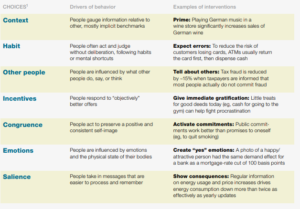
Fig.3: Framework of Behavior Drivers
Conclusion:
Mastering the concept and execution of an exceptionally good customer experience is a daunting challenge, but an essential one in today’s rapidly changing business environment. Many companies begin customer-experience efforts with lofty ambitions but a poor grounding in linking programs to value. To improve the framework of customer experience, take the time to construct a self-funding business case and you will reap company-wide buy-in as your reward. That will anchor your customer-experience program and pay dividends long after the up-front months needed to do it right have passed into history.
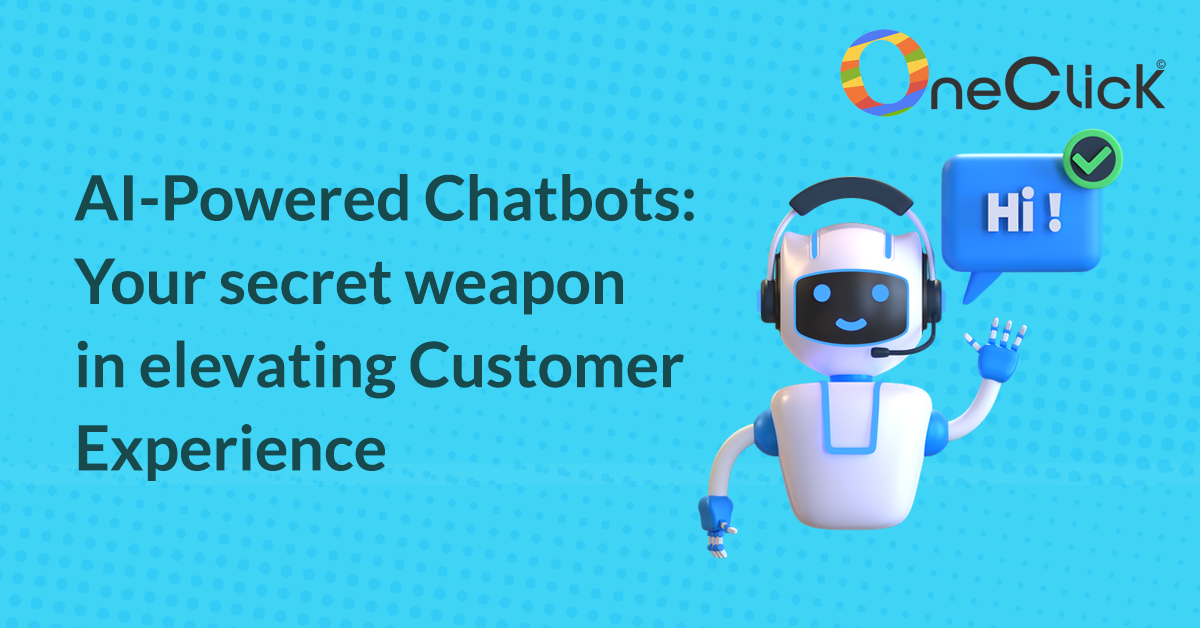
AI-Powered Chatbots: Your secret weapon in elevating Customer Experience
Since the first created chatbot by MIT in 1966, named Eliza, which analyzed keywords in a chat to ask questions to duplicate human conversations, chatbot technology has evolved and become more sophisticated over the years.
From orthodox customer service to AI-powered chatbots, the transition is truly remarkable for businesses opting to function more efficiently and make themselves available without spending excessive capital.
Customer outreach at any time, anywhere, across multiple platforms has enabled businesses to deliver a precise and powerful customer experience with the help of robust AI-enabled conversational chats.
Elevate Customer Experience with Conversational AI
“74% of customers purchase goods based solely on their experience with a company.”
To upscale customer experience, a business needs to evaluate customers’ buying needs to proactively retain brand loyalty.
“Over 70% of customers want personalized interactions from brands, and 76% get frustrated when it doesn’t happen.”
To overhaul customer experience, automation and speed play a vital role in dispensing information to customers without wasting any time. It is desirable with the help of AI-powered chatbots that employ Natural Language Processing (NLP) to provide a concise result for each query.
“About 40% of requests to chatbots are emotional, not informative.”
Customer retention depends on how the consumer feels when interacting with brands. Such factors can elevate or depreciates a brand. AI-enabled chatbot services can assist your brand for reasons as follows:
- Design Chatbots with the Customer in Mind:
Ensure a positive experience. It’s only viable to design chatbots with the customer in mind. Consider the customer journey and the types of inquiries customers will have. Use this information to create chatbots that are easy to use, provide relevant information, and offer personalized recommendations.
- Use Natural Language Processing (NLP) to Enable Natural Conversations:
Natural language processing (NLP) is a crucial component of chatbots that allows them to understand and interpret customer inquiries. With NLP, chatbots can engage in more natural conversations with customers, which can help to improve the customer experience.
- Provide Personalized Recommendations and Suggestions:
One of the main benefits of AI-powered chatbots is their ability to provide personalized recommendations and suggestions based on customer data. By leveraging this data, chatbots can offer tailored product or service recommendations for increased customer satisfaction and loyalty.
- Integrate chatbots with Other Software Systems:
Provide a seamless customer experience by integrating chatbots with other software systems, such as customer relationship management (CRM) or e-commerce platforms. It can help ensure chatbots have access to relevant customer data and can provide accurate and timely responses.
- Continuously Improve and Update Chatbots:
To ensure that chatbots continue to provide a positive experience, continuously monitor and improve them. It may involve analyzing chatbot interactions to identify areas for improvement, updating chatbot responses to reflect changes in products or services, or training chatbots on new data to improve their accuracy.
Why integrate an AI-powered chatbot into your business?
“Chatbots are projected to save 2.5 billion hours for business and help save costs by more than $8 billion per year by 2022.” (Source: juniper research)
With integrated AI chatbot services, businesses can cut the expenditure on infrastructure, manpower, and information deliverance. It helps them to streamline and improve their important operations.
“About 90% of customers require an immediate response to their query.”
In today’s paced information relays, businesses need to step up and adopt new communication methods to appraise their brand profile in the customer’s mind. With the easy-to-access technology of AI-chat bots, the following are the advantages an enterprise can concur:
- “More conversations lead to more conversions.”
The availability of a personal assistant in the form of an AI chatbot allows for flourishing conversations without human intervention and conflict. Conclusively, elevating customer satisfaction.
- Reduced Resolution Time
With greater insights into customers’ buying journeys, pinpointing conflict areas gets easier. Targeting these conflict areas with expertise initiates a better resolution than the hit-and-trial method.
- Personalized Marketing
Each input iteration helps the AI to learn more about the personal choices and preferences of a buyer. So, brands can target customers with specific products or services that are tailored to a group of customers.
- Omnichannel Outreach
Be it Whatsapp, Instagram, Facebook, or APIs, boost sales with on-time results and secure communication, which is available 24/7 via contextual conversations.
Conclusion:
AI-powered Chatbot service is a powerful tool for growing businesses looking to expand ergonomically. Cases of early integrations suggest that it helps a brand reach 10 times more in half the time to save operational costs up to 30%. It can handle 90% of customer queries with an over 90% resolution rate. Overall, it helps improve customer satisfaction, builds brand loyalty, and elevates customer retention by many folds over orthodox conversational methods.
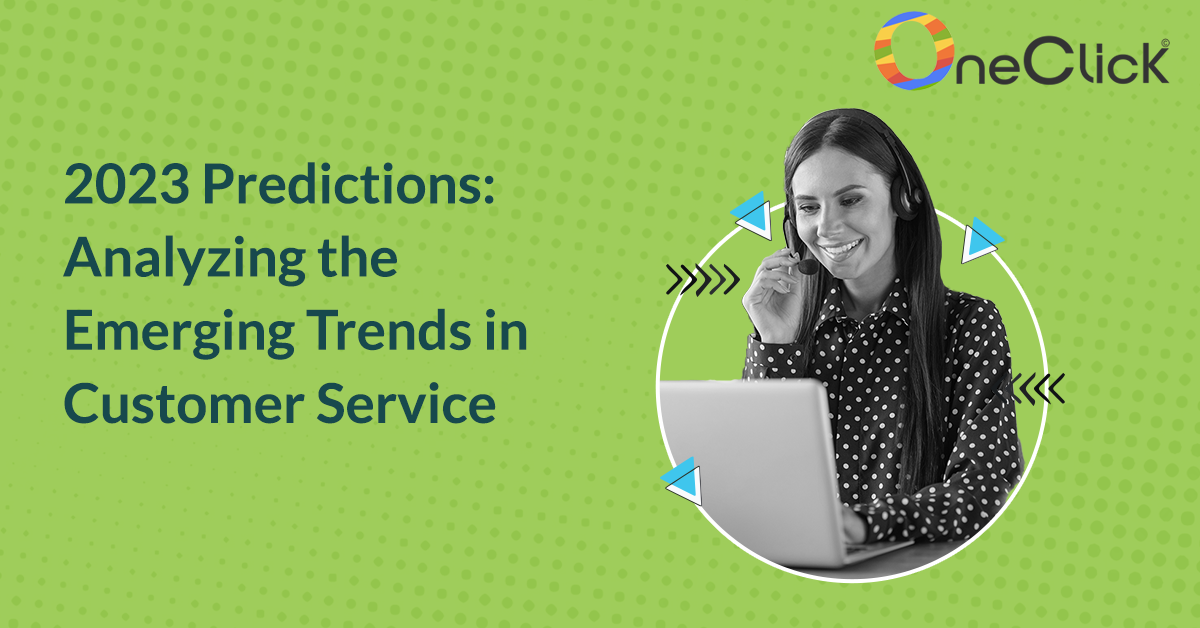
Analyzing the Emerging Trends in Customer Service: 2023 Predictions
Introduction
Customer service has always been a crucial aspect of any business, and in the fast-paced and highly competitive marketplace, customer service has taken on even greater importance. With the rise of technology and the growing expectation for seamless, personalized experiences, companies must stay ahead of the curve when it comes to customer service.
As we look ahead to 2023, there are several emerging trends that help to shape the industry, from the integration of artificial intelligence and automation to the rise of remote customer service.
Customer Service Journey Until Now
“About 89% want to see brands adopt more intuitive interfaces to improve the customer experience.”
Customer service analytics until 2022 enriched marketers and businesses via simple trends to improve the customer service landscape for better product placement and procurement of new customers. Some are listed below to give an overview of the history of customer service practices:
- Mobile Support: The widespread use of smartphones has made mobile support a must-have for customer service. Companies have responded by offering mobile apps, SMS support, and other mobile-friendly options to reach customers where they are.
- Social Media Support: Social media has become an increasingly important channel for customer service, with customers using platforms like Twitter and Facebook to reach out to companies for support.
- Live Chat: Live chat has become a popular option for the customer service team, offering a quick and convenient portal for the help they need.
- Knowledge Management: Companies have invested in knowledge management systems to provide customers with self-service options to improve the efficiency of customer service teams.
- Video Support: Video support, either through video calls or pre-recorded videos, has become a valuable tool for customer service, allowing companies to provide a more personal and visual customer experience.
- Gamification: Companies have used gamification techniques, such as rewards programs and leader boards, to incentivize customers to engage with self-service options and to make customer service more fun and interactive.
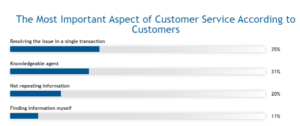
Figure 1: Aspects of Customer Service
Emerging Trends and Predictions in Customer Service
From the empowerment of customers through self-service options to the focus on employee experience, the future of customer service is ready to be more dynamic and innovative than ever before.
- Be Future Ready with Artificial Intelligence and Automation:
The integration of artificial intelligence and machine learning will continue to grow in customer service, with chatbots and virtual assistants becoming more advanced and able to handle the required range of customer inquiries.
- Omnichannel Support to Cover all Grounds:
“32% of global customers stop engaging with the business after one bad experience.”
Customers now expect a seamless experience across all channels, and companies are responding by offering omnichannel support through many platforms, including social media, live chat, and messaging apps.
- Personalization is the Way to Go:
“91% of shoppers are more likely to engage with brands they recognize, remember, and provide relevant offers and recommendations.”
The use of data and technology will enable customer service teams to offer a highly personalized experience, tailoring to customer needs and preferences of an individual.
- Empowerment of Customers for Better:
“In 2021, 90% of the 1,350 global professionals surveyed strongly or partially agree that organizations that fully embrace customer experience as a differentiator are more likely to have highly engaged employees.”
Self-service options will continue to become more sophisticated, allowing customers to find the answers they need quickly and easily without relying on live support. With better connectivity to the enterprise knowledge bank, customers or employees show increased engagement in the product or service.
- Focus on Employee Experience:
Companies will place emphasis on creating a positive and supportive work environment for customer service employees, recognizing that a happy workforce leads to better customer experiences. Through a carefully planned incentive program, integration of better UX, and less-stress working hours, employers can enhance agent experience for higher employee productivity.
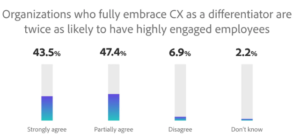
Figure 2: CX Trends for Highly Engaged Employees
- Rise of Remote Customer Service:
The pandemic has accelerated the trend towards remote work, and customer service is no exception. Many companies are now looking to hire remote customer service agents, providing increased flexibility and cost savings.
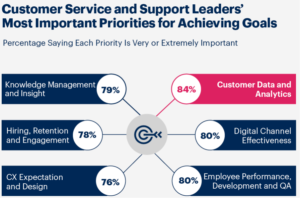
Figure 3: Factors Affecting Customer Service Priority
Conclusion:
In conclusion, for 2023, a great customer experience is the key to maintaining and elevating customer-business relationships. For highly operational customer support, listen to customer demands by collecting feedback, integrating automation and AI services, omnichannel support, improving agent experience, and providing self-help services.
